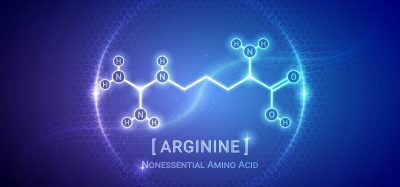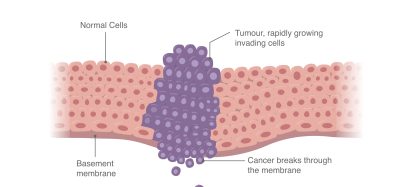Meet WRPRFa: the precision peptide changing how we study pain
Posted: 4 November 2025 | Sam Wightwick (Drug Target Review) | No comments yet
A newly developed peptide, WRPRFa, is giving scientists a clearer view of how the acid-sensing ion channel (ASIC3) drives pain signalling.


Growing demand for non-opioid pain therapies has intensified research efforts into alternative molecular mechanisms of pain. Among these, acid-sensing ion channels (ASICs) are recognised as key regulators of inflammatory and ischemic pain. Now, a new peptide tool, WRPRFa, is providing researchers with greater precision in studying ASIC3, a key member of this channel family.
Join us for our webinar on 19th November, where industry experts will discuss how WRPRFa is advancing pain pathway research and supporting the discovery of next-generation analgesics.
Understanding ASIC3: a key player in pain perception
ASIC3 belongs to a family of proton-gated ion channels that respond to decreases in extracellular pH – a hallmark of inflamed or injured tissue. When activated by acidification, ASIC3 channels open to allow sodium (and occasionally calcium) ions to enter sensory neurons, generating electrical signals that the body perceives as pain.
Research has shown that ASIC3 contributes significantly to secondary mechanical hyperalgesia – the heightened pain sensitivity that follows inflammation or injury.
These channels are highly expressed in peripheral sensory neurons, particularly in the dorsal root ganglia and in nerve endings that innervate joints and muscles. Research has shown that ASIC3 contributes significantly to secondary mechanical hyperalgesia – the heightened pain sensitivity that follows inflammation or injury.
Because of this, ASIC3 is considered a promising non-opioid pain target. Blocking or modulating ASIC3 could potentially relieve pain without affecting central nervous system pathways linked to addiction – a key advantage over traditional opioids.
Introducing WRPRFa: a precision tool for pain research
The peptide WRPRFa has recently gained attention as a new research tool for studying ASIC3. It is characterised as a potent and selective modulator of the channel, designed to help researchers investigate ASIC3’s physiological and pathological roles with precision.
The peptide WRPRFa has recently gained attention as a new research tool for studying ASIC3.
A major challenge in ion channel research is the lack of subtype selectivity among modulators. Many known compounds affect multiple ASIC subtypes (such as ASIC1a or ASIC2), complicating interpretation of experimental data. WRPRFa may overcome this by showing high selectivity for ASIC3, allowing researchers to study its function in isolation. This selectivity enables precise mapping of ASIC3-dependent effects, distinguishing them from other ion channels’ contributions.
Advancing target validation and preclinical development
WRPRFa’s true value lies in its role as a tool compound for target validation – the process of confirming whether manipulating a particular molecule (in this case, ASIC3) can produce the desired therapeutic outcome.
Researchers can use WRPRFa in several ways:
- Cellular assays: Applying WRPRFa to cultured sensory neurons or recombinant ASIC3-expressing cells allows scientists to monitor electrical activity and downstream signalling, revealing how ASIC3 contributes to pain transduction.
- Animal models: When administered in vivo, WRPRFa may help clarify how ASIC3 modulation influences pain behaviours in inflammatory or ischemic pain models.
- Comparative studies: WRPRFa serves as a benchmark for testing new ASIC3 modulators, helping preclinical screening and optimisation.
This capability supports progress from target validation through to preclinical development. In other words, WRPRFa provides the critical proof-of-concept link between molecular biology and pharmacology – turning ASIC3 from a theoretical target into a validated therapeutic opportunity.
These insights not only deepen scientific understanding of pain mechanisms but also inform rational drug design – allowing the development of compounds that target pain more effectively and selectively.
Implications for analgesic discovery
WRPRFa’s impact extends beyond basic research. By clarifying ASIC3’s physiological roles and pharmacological profile, it provides an outline for the next generation of non-opioid pain therapies.
- Improved target confidence
If WRPRFa consistently reduces ASIC3-mediated pain responses, it reinforces confidence in ASIC3 as a therapeutic target – reducing the risk of costly ‘false starts’ in drug discovery.
- Enhanced screening assays
With a reliable and selective reference modulator, laboratories can develop standardised assays to screen new compounds for ASIC3 activity. WRPRFa acts as a benchmark tool for measuring efficacy and selectivity in drug candidates.
- Mechanism-guided design
By mapping WRPRFa’s binding and modulation patterns, medicinal chemists can design derivatives or small molecules with improved drug-like properties.
Understanding the molecular mechanism enables structure-guided optimisation rather than trial-and-error discovery.
- Personalised and safer therapies
ASIC3 is primarily expressed in peripheral sensory neurons, suggesting that ASIC3-targeting therapies could relieve pain without acting on the central nervous system –reducing risks of addiction or sedation. Insights from WRPRFa studies may also help identify patient subgroups whose pain is specifically driven by ASIC3-mediated acidification, enabling precision medicine approaches.
Conclusion
In the search for safer, more effective pain relief, understanding the molecular underpinnings of pain is essential. WRPRFa offers researchers a powerful and selective way of probing ASIC3, one of the most promising ion channels implicated in pain signalling.
In the search for safer, more effective pain relief, understanding the molecular underpinnings of pain is essential.
By enabling precise target validation, facilitating preclinical assay development and guiding the design of next-generation analgesics, WRPRFa demonstrates how cutting-edge molecular tools can translate scientific theory into therapeutic innovation. As researchers continue to explore its properties, WRPRFa may ultimately help to produce new types of non-opioid, mechanism-based pain treatments.
These themes will be discussed in our upcoming webinar on 19th November. You can register below to take part.
Can One Peptide Change Pain Research? Meet the Tool Transforming Drug Discovery
19 November 2025 | 4:00 PM GMT
Free registration | Live Q&A included
Discover how WRPRFa is helping researchers better understand pain pathways and accelerate the search for next-generation analgesics.
Hear from experts:
- Dr Nien-Du Yang – Senior Scientist, Latigo Biotherapeutics, Inc
- Dr James Costantin – Scientific Market Development Manager – Ion Channels, Eurofins DiscoverX
Related topics
Drug Discovery, Drug Discovery Processes, Ion Channels, Neurosciences, Peptide Therapeutics, Pharmacology, Target Validation
Related conditions
Chronic pain, Hyperalgesia, Inflammatory Pain, Ischemic Pain, pain








